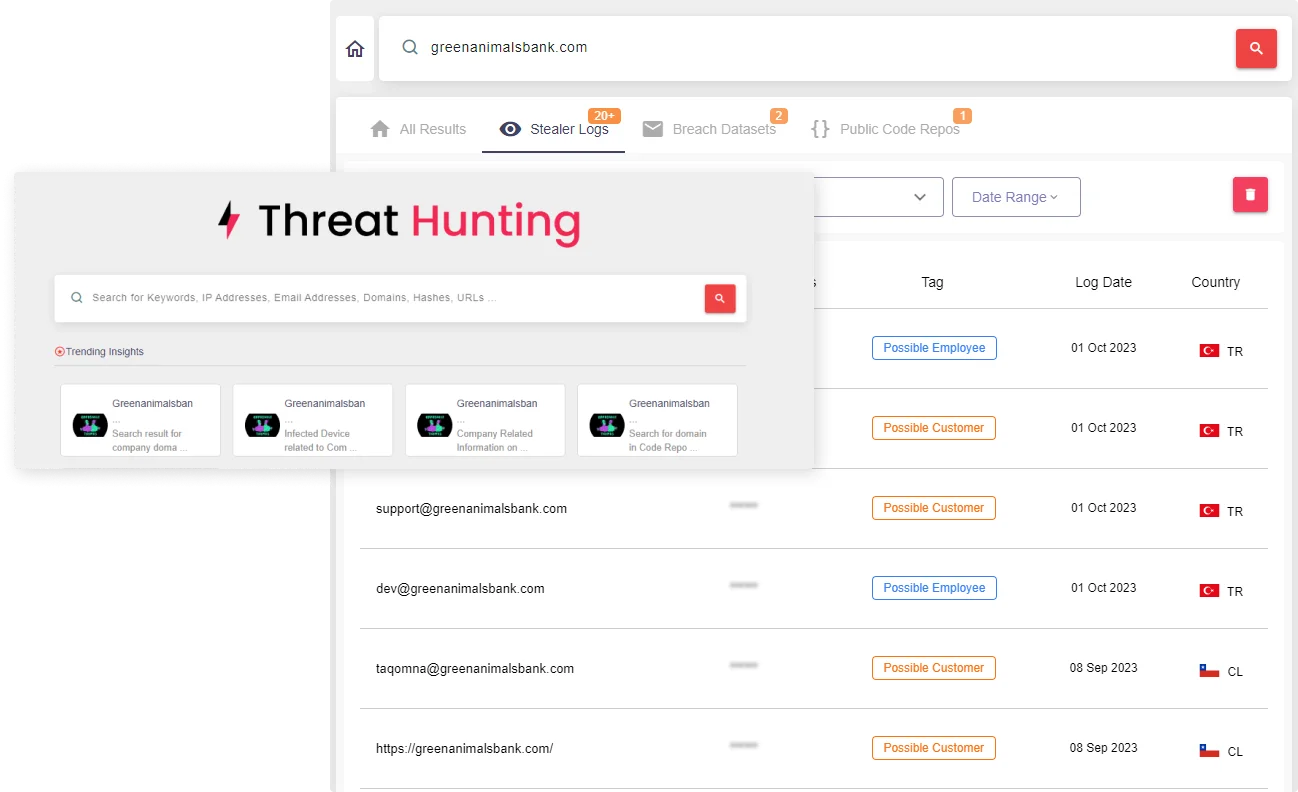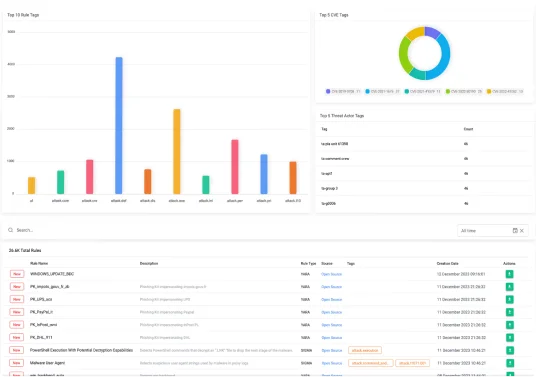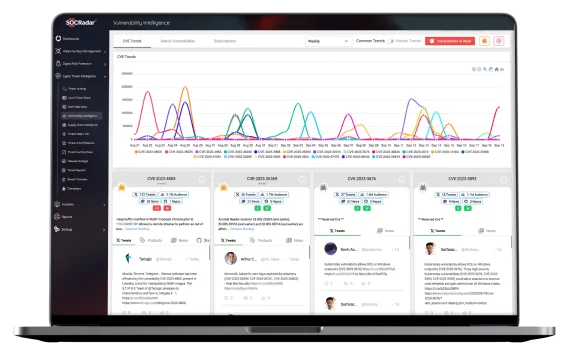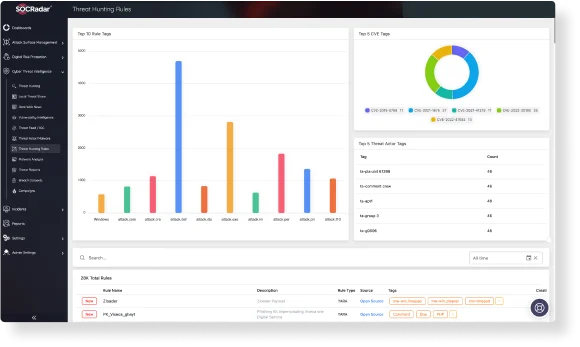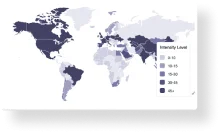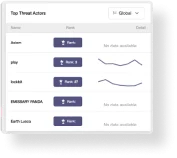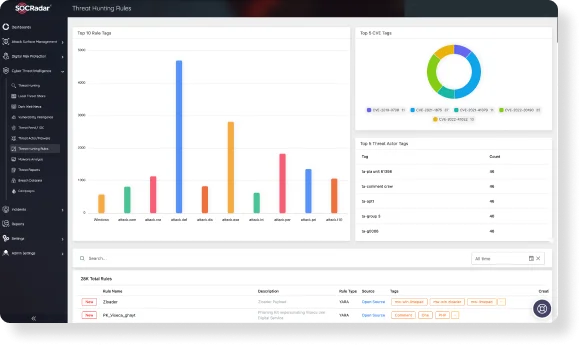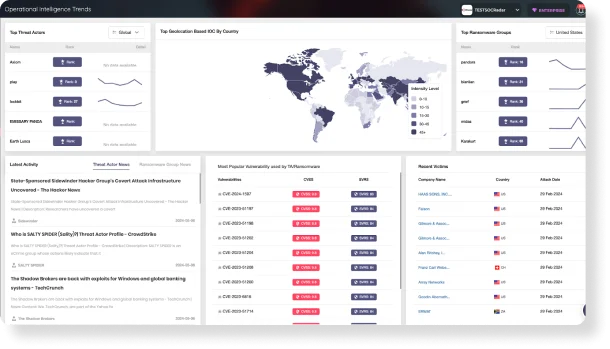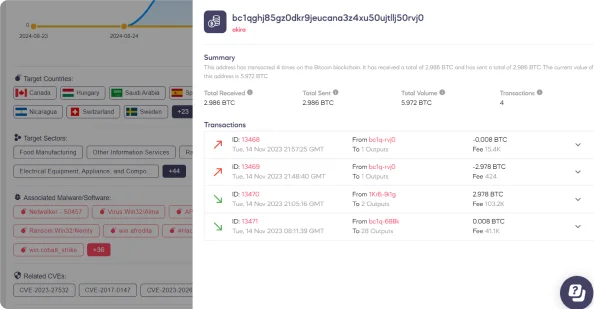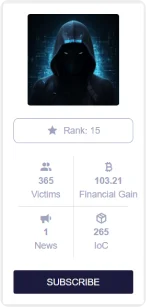
![]()
Cyber Threat Intelligence
Your Shield Against Cyber Adversaries is even stronger now!
- SOCRadar offers a horizon beyond traditional CTI products with its redesigned and enriched features.
- You no longer need to juggle different aspects of threat intelligence.
- As one of the most robust data providers in the cybersecurity landscape, SOCRadar delivers actionable, contextual insights.
- These insights are provided through five user-friendly modules based on core CTI principles.
Modules
Values of Cyber Threat Intelligence
Cyberattacks often start with planning in hidden corners of the web. Even tiny pieces of information can save your organization from a devastating cyberattack. SOCRadar acts as your eyes and ears, monitoring hacker forums, Telegram channels, instant messaging platforms, dark web markets, social media platforms, and many other communications tools on the dark/deep and surface web attackers use to organize an attack.
This is a contest against time! Research shows that threat actors scan for vulnerable endpoints within 15 minutes of a new CVE being publicly disclosed. Patching all the vulnerabilities discovered during scans is almost mission-impossible. Therefore, security analysts need prioritization.
Empower your security team with the intelligence to guide the periodic security action plan – with SOCRadar’s advanced Cyber Threat Intelligence;
- Get real-time insights on potential attacks, including motivations, timing, and methods.
- Gain in-depth profiles of known threat actors and ransomware groups.
- Monitor dynamic changes and trends in the cyber threat landscape and adjust your security posture accordingly.
Money is the primary motivation for cyber attacks. But thanks to SOCRadar’ s Operational Intelligence module’s new features, money is also a clue. Money talks; you just need to hear from the right sources.
We provide blockchain addresses as Indicators of Compromise (IoCs); blockchain address information can be integrated into broader threat intelligence feeds, expanding your intelligence capabilities.
Alongside blockchain addresses, you can now access detailed transaction histories, giving you a comprehensive view of financial flows associated with threat actors. Now, you can better identify patterns in threat actors’ operations and links between different attacks.
As a cherry on top, we offer unparalleled insights into the monetary impact of threat actors’ activities with financial gain calculations.
Key Benefits
Provides insights into user access information along with compromised credentials
Empowers you to leverage the power of MITRE ATT&CK with actionable visualizations
Enables you to analyze CVE trends using 'Common Trends' and 'Hacker Trends
Offers an extensive library of 32,000+ threat hunting rules.
Subscription Plan for Cyber Threat Intelligence
- Vulnerability Intelligence
- Dark Web Intelligence
- Threat Hunting
- Threat Feed IOC
- Threat Actor Monitoring
- Malware Analysis Sandbox
- 15000 Threat Search Credits
- Unmasked Data
- 30 Supply Chain Vendor Tracking
- 150+ Feed Sources
- 10000 Threat Hunting Rule Access
- 6000+ Combolist Access
- Subscription-based Monitoring
- 1000 Malware Analysis Credits
Are you a Enterprise? See Ultimate Plan
See Threats Before They Strike

Visibility Into Dark Web
Gain in-depth and actionable threat intelligence to profile current and future threats.

Accelerate Investigation
Get fast, relevant and accurate results from the darkest parts of the internet.

Respond Quicker
Combat and mitigate identified threats by understanding adversarial capabilities.

Shed Light On APT Actors
Get essential insights into the latest activities of state-sponsored APT groups.

API-Ready Feeds
Consuming threat intelligence feeds by leveraging millions of data points in the wild.

Trends Visualization
Access vulnerability trends as well as auto-aggregated, customizable news.
According to Gartner, “threat intelligence is evidence-based knowledge, including context, mechanism, indicators, implications, and actionable advice, about an existing or emerging menace or hazard to assets that can be used to inform decisions regarding the subject’s response to that menace or hazard”.
EC Council’s definition is very similar, “threat intelligence is the analysis of data using tools and techniques to generate meaningful information about existing or emerging threats targeting the organization that helps mitigate risks”.
Cyber threat intelligence aims to help institutions and organizations understand the risks of cyber attacks or cyber threats. These attacks can range from zero-day attacks, crypto viruses, APTs (Advanced Persistent Threats), botnets, or exploits. These threats are reported with the intelligence activities after being reviewed by CTI analysts to provide special protection methods to assist in an active defense in your organization.
The skilled, well-funded, well-organized, and highly-sophisticated cyber attackers use techniques that reveal security strategies to the technology alone. To develop a defense strategy against attackers, organizations need to know how hackers operate, how they function, and what techniques they use.
Cyber-threat intelligence allows companies to identify the dynamics and consequences of risks, improve security plans and structures, and reduce their attack potential to minimize damage and defend their network.
CTI can identify and analyze cyber threats against your business. Therefore, CTI can help you to:
- Focus on actionable alarms; the legacy threat intelligence solution provided only feeds and (Indicator of Compromise) IOCs, which were not actionable. But organizations started to need more and more of the latest intelligence about them. With real-time intelligence on threat actors, botnets, malware, and data from the dark web and the deep internet, organizations need to detect phishing domains targeting their customers.
- Collect, Verify, and Prioritize External Threats; CTI can deliver the hard work for your business with enriched intelligence that allows you to apply smarter defense and improvement processes.
- Detect Forgotten Assets and Monitor Attack Surface in Real-time; CTI can determine the blind spots by following the changing attack surface all the time.
- Prevent Data Loss; by using CTI, cyber threats can be detected, and security breaches can be prevented from disclosing confidential information.
Various threatening knowledge and theoretical approaches are useful at various businesses’ levels. The four categories of cyber threat intelligence have to do with different objectives:
- Strategic Cyber Threat Intelligence; It utilizes comprehensive pattern and emerging risk analysis to provide an outline of future cyber-attack implications.
- Operational Cyber Threat Intelligence; It is mainly used to make resource management decisions regarding actual and potential risks, historical resources, affiliations, and motives of threat actors.
- Tactical Cyber Threat Intelligence; Primarily, its main target is a technically trained audience and allows them to learn more specific details on threat actors’ tactics, techniques, and procedures (TTPs).
- Technical Cyber Threat Intelligence; It focuses on the technological details suggesting a cyber-security threat, such as phishing email lines or malicious URLs.
| Information | Intelligence |
| Unfiltered and raw data | Processed and sorted data |
| Not evaluated | Evaluated by Threat Intelligence Analysts |
| Too much-aggregated data | Only useful data |
| Not actionable | Actionable |
| Disconnected, incomplete, irrelevant | Connected, completed, and relevant |
Usually, cyber threat intelligence and cyber intelligence terms are used for the same meaning. But in theory, the two terms have different contexts.
CTI is the collection and revealing of threats that may harm business elements and security at any level to institutions and organizations. It is a type of intelligence that enables early measures to be taken by detecting the goals, methods, or types of attacks of the attackers as a result of analyzing the data collected and enriched from electronic media through a process.
CTI provides information on malicious actors, their tools, their infrastructure, and their methods for;
- Identifying types of attacks,
- Defining, guiding, and prioritizing operational requirements,
- Understanding threat actor capability, tactics, techniques, and procedures,
- Deploying detection systems,
- Developing defense strategies.
- Cyber intelligence (CI) translates the data obtained from the attackers’ networks into an operative report through “standard intelligence approaches.”
As can be understood from the definitions, while CTI focuses information on cyber threats, CI focuses on useful Intel from the Internet.































